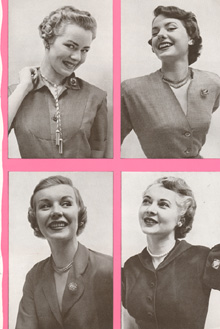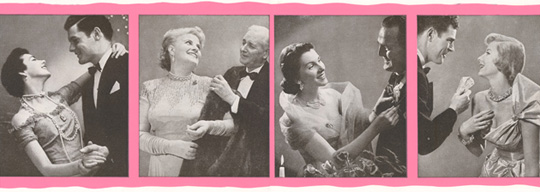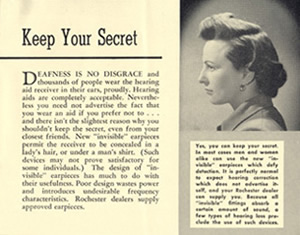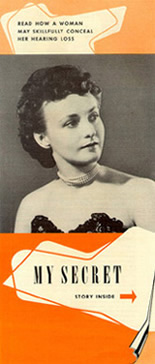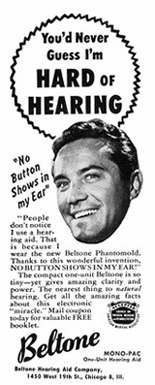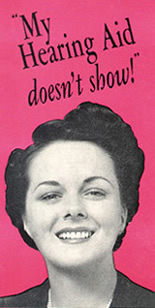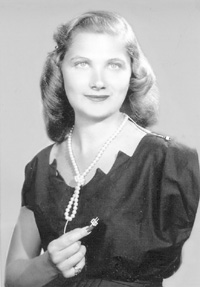Concealed Hearing Devices of the 20th Century
In the 1950s, many men and women would not dream of leaving the house without being smartly attired with several items of ornamental jewelry. In this era, hearing aid earpieces were often disguised as earrings, microphones made to resemble brooches or tie clips, and cords concealed within women's necklaces.
Decorative insignia pins for women, as seen in these advertisements for “SonoCharms,” concealed hearing aid microphones.
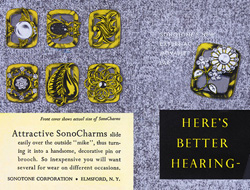 |
Courtesy of Sonotone |
All is Vanity
He wears a hat with a hard tight rim,
But a hearing aid headband? Not for him!
Her earrings pinch and they're as big as dollars,
But a tiny ear piece? “No!” She hollers.
His pockets bulge with a horrid litter,
He hasn't room for a small transmitter.
She squints and scowls with the strain she brooks,
But she's sure that an aid would “spoil her looks.”
Vanity, vanity, all is vanity.
And vain is aid for vain humanity.
— Gene Ellinger, 1949
Courtesy of Sonotone |
“Smartly worn” hearing aids and devices with cosmetic appeal were marketed during the mid 20th century. Manufacturers claimed that their devices were virtually unnoticeable, discreet, or invisible and that “no one will know you are deaf.” Hearing devices were becoming smaller, their batteries were smaller and lasted longer, and their power was increasing.
|
|
|
|
|
| Hal-Hen Simulated Pearl Necklace Hearing Cord | |
|---|---|
| The Hal-Hen pearl hearing aid necklace as modeled by the creator’s wife, was designed to camouflage the hearing aid cord. | |
© Hal-Hen Company, Inc. |





